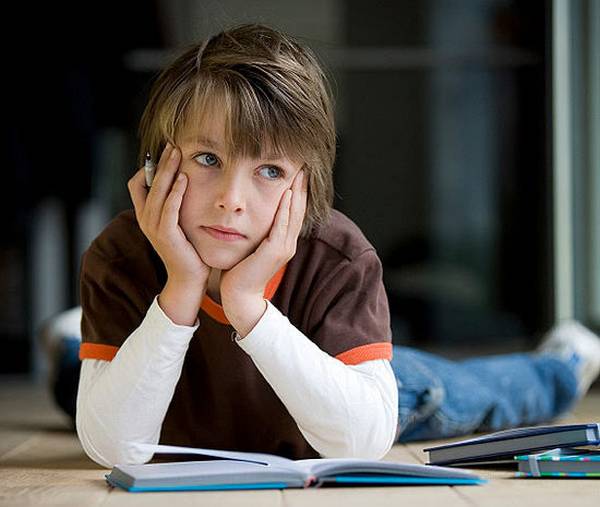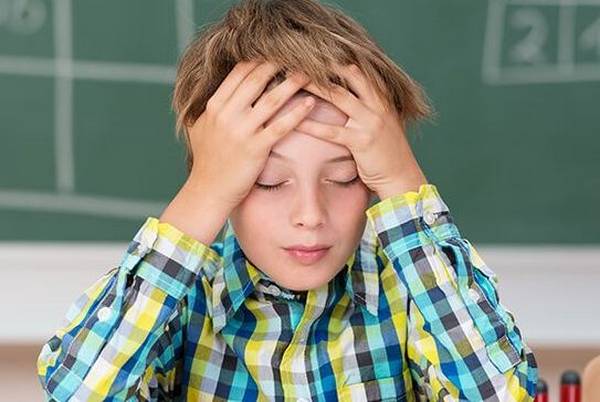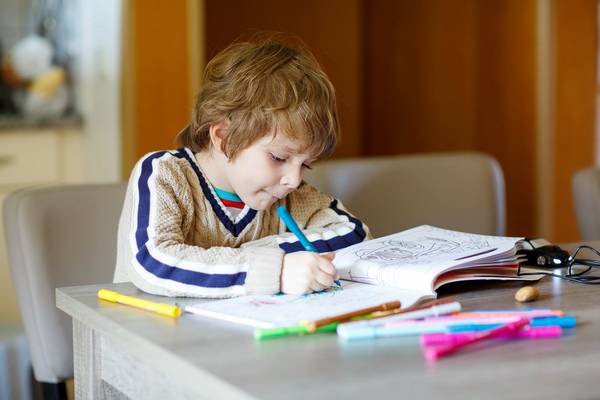Attention and attentiveness
What it is?
First of all, let’s distinguish between the concepts of attention and attentiveness.
|
Why is attention important?
Effective attention is what allows us to filter out unnecessary stimuli in order to focus on the information that is important at the moment.
It also means the ability to sustain attention, which allows you to stay engaged with a task long enough to practice it repeatedly. Repeated practice is critical to skill development.
Attention also allows us to focus on important details (for example, in speech: “do this... that... that before brushing your teeth”).
Consultation: “How to teach a child perseverance and attentiveness”
How to teach a child perseverance and attentiveness
Perseverance, diligence, and attentiveness of a student are the key to his success at school and in later life. But in order for a child to have these qualities, it is necessary to develop them from birth. A person’s ability to control his behavior, to perform work for a long time, sometimes even difficult and uninteresting, is laid down in early childhood and develops gradually. To develop perseverance, to bring what is started to the final result, to be attentive - this is the primary task of parents
It is difficult for a child to concentrate on one thing for a long time, his attention is unstable, but this is necessary for a quick, comprehensive knowledge of the world. Therefore, in order to attract his attention and keep it longer, tasks should be bright and interesting, all classes should be conducted in a playful and entertaining way.
Parents, who are the unquestioned authority for the child, must themselves meet the requirements that they make. Keep your promises, do not commit rash acts, follow the sequence of actions. Then the child, imitating his parents, will easily acquire these skills without much effort on the part of mom and dad.
It is very important to follow a daily routine; this disciplines the child, because he knows perfectly well when it is time to eat and go to bed. The child will not waste energy on unnecessary whims, but at the same time he will get used to following the rules, which also contributes to the child’s self-control.
When children play with their parents, it is necessary to try to follow the sequence of actions of joint play, which do not become boring. They should be interesting for the child, drawing them into the world of play.
The end result in activities and games should always be present. Praise your child, inspire him to further exploits, awaken the desire to hear praise again and finish what he started. During the game, it is necessary to remove all possible irritants: the TV on, other toys. In general, a child should not have a lot of toys lying around in plain sight, as this distracts his attention.
A good reason to discipline a child is cleaning up after playing. It’s great if the baby wants to help mom with cleaning or cooking. Even if you have to redo everything later, the child will do everything with pleasure, receive praise and learn to help his parents.
To develop perseverance and attentiveness at school, use activities that promote this: drawing, modeling, applique, cutting, puzzles, board games, construction sets. Play with the child, guide him, arouse interest, then the child will more easily adapt to school, and commitment and perseverance will not be a reason for reproach, but a natural process.
What is important for parents to know about a child’s attention and attentiveness?
Attentiveness, as an indicator of attention, is not a constant value.
Yes, it's possible that constant distractibility is a characteristic of your child. The reason may be hyperactivity, lack of expressed interests, rapid fatigue of the body, etc. It may also be affected by motivation, self-esteem, sensory integration, practical skills, language difficulties and any existing diagnosis.
However, this does not mean that mindfulness cannot be developed. It is possible and necessary to develop this quality in a child!
What building blocks help develop attention?
- Sensory processing
- Executive functions
- Self-regulation
- Good speech understanding
- Good hearing and auditory processing
- Motivation
- Favorable environment
How do I know if my child has attention problems?
A child with insufficient attention:
- Does not engage in a task when required.
- Omits details in instructions.
- Repeatedly makes the same mistakes (due to not learning from past experiences).
- May not listen to information to the end.
- Cannot calm down (because he is too physically active) or “wake up” because he seems sleepy and lethargic.
- Begins to complete a task, but then gets distracted by something else and “forgets” to complete what was required of him.

What other problems might arise?
When a child has attention problems, he may also have difficulty with:
- mastering new skills;
- social interaction;
- studying and expanding the repertoire of gaming skills;
- ability to follow instructions;
- receptivity (understanding) of speech;
- auditory processing (accurate understanding of verbal information).
How to increase attentiveness in a child
- Repeating instructions: Once you have given an instruction to your child, ask him to repeat it to make sure he heard/understood what was expected of him.
- Sensory Integration Therapy: Addresses attention problems that are sensory in nature.
- Eye to eye: Move closer to your child so that he can hear you and see your face; get down to his level.
- Plain language: Use clear, specific language when making requests and, if necessary, show what you want from him.
- Reduce background noise and distractions to help your child pay attention long enough to learn the information needed to complete a task.
- Develop receptive language (i.e. understanding what is being said) so that he can better understand expectations and information and therefore be able to better respond to what he hears.

Activities that help develop attentiveness in schoolchildren
You can teach your child to be attentive and collected through different types of activities and special classes. Let's give just a few examples.
- Sensory activities such as:
- obstacle courses requiring physical tasks,
- walks with animals,
- trampolining,
- riding a bicycle and scooter,
- swings (forward and backward, side to side, rotating),
- tactile toys.
- Discrete skills: Activities that have a specific starting and ending point, such as puzzles, building tasks, mazes, and dot-to-dot painting.
- Narrowly focused tasks: Activities that are very specific and require very focused attention, such as sorting, organizing, and categorizing activities (for example, card games such as Uno or Memory).
- Visual schedules allow the child to see and understand what will happen next. Schedules also help people get organized, plan ahead, and thus gain attention more effectively because they know completion is approaching.
- Timers (ideally visual) help with transitions because they tell the child how long and when he will have to do something. Timers allow you to alert your child that a task or requirement is approaching.
- Auditory processing: Gradually increase the number of distractions while the child completes the task. Start by doing the task in silence, then introduce “white noise” (such as radio static), then classical music, then a radio broadcast, and finally carry on a conversation with someone in the room.
6 ways to develop a child's attention
Other ways to teach your child mindfulness
In psychological workshops there are a large number of various techniques on this topic:
- pictures-riddles for attentiveness,
- tests for attentiveness and logic,
- psychological exercises,
- educational games, etc.

Psychological exercises
How much is there in the room
The child is asked to look around the room and list as many objects as possible in it according to a given characteristic (for example, all objects are green or round, etc.).
“I won’t lose count”
The child needs to count to a certain number (for example, 40), saying out loud all the numbers except those that are divisible by 4. Instead of missing numbers, you can say some phrase - for example, “I won’t get lost.”
Letter "M"
The child listens carefully to a short text and counts all the words starting with a certain letter (for example, “M”). After reading, he must say how many words he got. However, it is important that the child understands what is being said, and not just mechanically count the words. This is easy to check: after the child tells you the number of words counted, ask him to retell the text he heard.
Mixed up actions
The child needs to perform certain actions after the parent according to a pre-agreed pattern, for example: if the parent raises his hands up, then the child claps his hands at this time; if the parent bends to the side, then the child performs a squat, etc.
Noun-verb
The parent throws a ball to the child, while naming some noun (for example, boot). The child must come up with a corresponding verb for this noun (for example, put on). After this, the child throws the ball back to the parent and says his noun. Now it’s the adult’s turn to come up with a verb, etc.
Example proverb
The child solves a simple mathematical example while listening to some popular proverb. Upon completion, you need to name the answer in the example, and then retell the proverb.
Attention tests for children
Schulte tables
This is a fairly popular attentiveness test. The child is offered a square of 25 cells. Each cell contains numbers from 1 to 25 in a chaotic order. The child needs to find and show all the numbers in order.
Find out more about numbers for children from 1 to 10
There may be several such tables (5-7); you can also select tables of different levels of complexity.
The exercise should be performed with a stopwatch (while the child finds all the numbers, the parent records the time). If you record the time spent by a child on each table, you can identify not only the level of attentiveness, but also an indicator of fatigue. Regular attention training in children using this exercise leads to good results.
| Example of a Schulte table |
Methodology “Corrective test”
On a special form there are rows of letters, they are arranged in random order. Within one minute, the child must sequentially look through the rows and cross out two given letters (for example, “a” and “c”). When the minute ends, the adult says the command “damn!” This means that the child must stop at the letter where the command found him and draw a line.
Then the adult again times the time, and the child continues to cross out the letters until the next command “Damn!” In total, 10 minutes (10 cycles) are allotted for the entire test. You can also make it more difficult by alternating tasks:
- 1st minute: the letters “a” and “c” are crossed out,
- 2nd minute: letters “v” and “k”,
- 3rd minute: again “a” and “c”,
- 4th minute: “in” and “to”, etc.
Subsequently, it is also possible to determine not only the child’s level of attentiveness, but also the fatigue of attention, as well as its stability and switchability.
| Methodology “Corrective test” |
Riddles for attentiveness
If your child still has difficulty coping with the numbers and letters of the tests described above, offer him riddles for attentiveness. You can also use riddle pictures for clarity.
Dual pictures
Show your child special pictures that, when viewed differently, can be perceived in two ways (frog-horse head, young woman-elderly woman, vase-human profiles). When he tells you one of the options he saw, invite him to consider the second, alternative.
| Psychological test: girl or old lady? | Double image: vase or profile? |
Hide and seek pictures
The so-called hide-and-seek pictures are good for developing attentiveness. For example, pictures in which you need to find a given number of objects (geometric shapes, people, human faces, etc.). For example, there is a whole series of pictures “Find the cat”. Moreover, the drawing is constructed in such a way that the image of the cat is completely invisible when first viewing the picture. Some of them are immediately visible to the naked eye. In order to find the rest, you need to be attentive.
Pictures “find 10 differences”
Everyone knows paired pictures, depicting the same plot, but with some differences that need to be found. This is a very good mindfulness exercise for children. It also helps develop observation skills.
Dancing man
The picture shows a man in 9 different poses (standing upright, jumping, dancing, walking, etc.). At the same time, at first glance, some people seem exactly the same. However, upon closer examination, you will find that this is not the case. In fact, only two of them are completely consistent. The child’s task is to find this pair.

Educational games
It will also be useful for parents who want to develop attentiveness in their child to know that board games such as chess and checkers are well suited for this. Also, many sports games, in addition to general physical training, have a positive effect on the development of attention, as they require concentration on an object (for example, on a ball).
If your child cannot be pulled away from computer games, do not rush to get upset. Computer games can be different, including educational ones. Try to choose one of them so that your child can combine an exciting pastime with benefits for the development of his basic mental processes.
Find out more about attention games for children
Exercises to develop perseverance.
Loading...
- Exercise “Bell” Ring the bell and ask the children to listen to the vibration of the sound of the bell.
Tell them to silently raise their hands when the ringing stops. After this easy activity is completed, ask the children to be silent for one minute and pay close attention to other sounds they hear after the ringing has stopped. After this, go to each child and ask him to tell what sounds he heard. This exercise develops speech, sense of perception and attentiveness. - Breathing Exercise Give each child a toy (or other small object) and, if the room allows, ask the children to lie on the floor and place the toys on their stomachs.
Tell them to breathe quietly for one minute and notice how their breath moves up and down the toy, as well as any other sensations they feel. Ask them to imagine that all their anxious thoughts turn into soap bubbles and fly high, high. Meditative breathing makes children friendlier, calmer, and allows them to see that play activities do not have to be noisy. - Exercise “Meditation” While the children are lying on the floor, ask them to close their eyes and squeeze all their muscles very, very hard (as much as possible). Tell them to clench their fingers and toes, tense their hips, tense their neck, and lift their shoulders and head up. Ask the children to hold this position for as long as possible, and then exhale deeply and completely relax.
- Exercise “Smells” Give each child an object with a natural aroma: a sprig of jasmine or lavender, orange peel, lemon zest, geranium leaf... Ask the child to close his eyes and inhale the aroma, focusing his senses only on it. This exercise affects the brain, improves memory, attention, perseverance, and ability to concentrate.
- Exercise “Touch” Prepare several objects of different sizes and shapes. These could be buttons, pebbles, feathers, balls, soft toys... Ask the child to close his eyes, take an object out of the box (package) and describe it. This is a very useful exercise not only for children, but also for adults!
- Heartbeat Exercise Ask children to jump for one minute and then tell them to sit back down and place their hands on their chests near their hearts. Let them close their eyes and feel their heartbeat, breathing, let them tell what else they feel in their body.
- Exercise “Feelings” The exercise may be called “Let’s talk about feelings.” Let the children sit back and tell you how they feel. How do they feel? How do they know that they have certain feelings? Do they connect feelings to specific organs? Also ask what feels best to them, what they can do to feel better.












